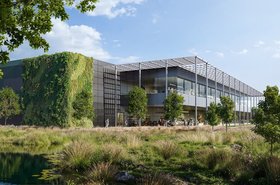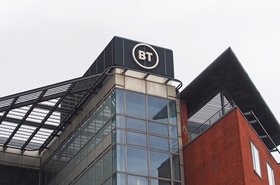Isambard-AI, the UK government-backed supercomputer, was officially inaugurated this week, shortly after landing the 11th spot on the latest Top500 list.
The place chosen to house this £225 million ($302m) system? The West Country, specifically, the University of Bristol’s Centre for Supercomputing (BriCS).
As a native of this region, the news warmed my heart to know such an often overlooked area for investment would be home to one of the most powerful supercomputers in the world.
More than just cider
British islanders know the region for scrumpy and cider, Hot Fuzz and cheddar cheese, and music that features an awful lot of people saying, ‘Oooh arrr.’
The best way to explain it to colleagues across the pond is a bit like the American Midwest, in that it’s vast, with lots of farmland, but everyone sounds like a pirate – an association for which we have Dorset actor Robert Newton and his portrayal of Long John Silver to thank.
And while I don’t wish to make this whole diatribe too much of a West Country love-in, the investment in Isambard-AI marks the latest in what is becoming a remarkably fast-growing regional technology sector.
Back in 2022, a study from Whitecap Consulting and Tech South West predicted the region would benefit from some 125,000 new tech jobs by 2026 across sectors like robotics, environmental science, and agritech.
Those roles are likely to find themselves in the so-called ‘Silicon Gorge’, which gets its name from nearby Cheddar Gorge, similar to how the city of Austin sought to showcase its cluster of tech firms through the apparent moniker, ‘Silicon Hills.;
Among those who find themselves inside Silicon Gorge include cloud firm IONOS, which is based in Gloucester, while nearby Cheltenham is a cybersecurity hub as it’s home to the Government Communications Headquarters (GCHQ). In Bristol, you can find Broadcom, Qualcomm, and even HP has a research site in the city. Then there’s vacuum maker Dyson in Malmesbury, Airbus in Filton, and Renishaw in Wooton-under-Edge.
Meanwhile, the county of Somerset is set to play home to Hinkley Point C, the country’s biggest nuclear project in years – though the 2.3GW site has suffered from constant delays and planning battles.
Boost for Bristol
Much is made in the UK about the north/south divide, with the north more often seen as the more deprived of the two halves of the nation, what with the industrial heartlands and mining towns ravaged by outsourcing.
And while the region has perhaps not seen the same level of suffering some communities face the further north you go, it’s unarguable that the West Country, too, has seen its fair share of decline.
Farmers, for which much of the region is known, are being increasingly squeezed by supermarkets wanting to cut costs. And the seaside towns all along the region, from Weston-Super-Mare to Torquay, are some of the most deprived in England, with roles largely seasonal, focusing solely on tourism.
Major employers in the region have also upped sticks in recent years, like Honda in Swindon, which manufactured cars for more than 36 years before packing it in and moving to where production was cheaper, because of Brexit. Or the scourge of NIMBYs, which has meant that projects to boost employment, like the mammoth distribution center for retailer The Range, have been shot down – there’s also a group currently going after an Ark Data Centers project in Corsham.
Some tech companies are also getting out, with embattled chipmaker Intel shuttering its Swindon office as part of its wider cost-cutting efforts. Even some of the region’s shining light startups have suffered, like agtech firm Small Robot Co, which went into liquidation after failing to raise enough capital.
This long-term economic malaise has seen the region almost drift into a sense of forgetfulness. And, with projects like the previous government’s Levelling Up initiative aimed at boosting investment in the north (regardless of whether you feel it did anything good), the West Country has been left to the wayside, likely thought of as chugging along, doing its own thing, but still capable.
Which is why Isambard-AI being chosen for Bristol is so important.
Yes, logically, the BriCS site has experience in handling supercomputing systems of this magnitude, such as with the recently retired Isambard 2.
But this latest project is designed so that AI researchers and enterprises across the UK can tap into it remotely. Meaning, the home of the supercomputing project could have been anywhere in the country, and they picked Bristol (well, the facility is closer to nearby Yate than Bristol, but tomayto, tomahto).
At the official launch of Isambard-AI, there were lofty themes of how this supercomputer will help power AI research that’ll change society for the better, all that jazz.
But if you go to nearby Chew Magna, Pill, or, God forbid, Weston Super Mare, they probably care more about bringing down the cost of rent, or getting the NHS back working.
And that’s the beauty of this supercomputer. That £225 million investment is set to allow researchers the ability to power intense training workloads.
Supporting local communities
I asked one of the main minds behind Isambard-AI, Professor Simon McIntosh-Smith, how he would explain the true value of this project to these local communities, and he too expressed excitement about the actual real benefits the supercomputer could bring.
“The thing that gets me really excited is in the sort of healthcare, life sciences space. We’ve got some case studies where people are developing vaccines for dementia. That’s one of the scourges of our time, and it’s being started to protect all of us from that. Those are advantages you’re going to see over the next few years, coming out of machines like this much, that’s what I’m really excited about.”
To the Professor’s excitement, I spoke with a pair of researchers building a foundation model capable of performing Cardiac Magnetic Resonance Imaging (MRI) to detect potential issues with a patient’s heart or wider cardiovascular system.
Its use cases, actual tangible use cases like that, which make this project worthwhile for the local communities beset with, frankly, chronic underinvestment.
Isambard-AI is the rare glimmer of hope for a region often palmed aside for cheap jibes about being bumpkins. To house the computing power capable of supporting some of the most impactful projects of our time is an honor local folk should be proud to bear.
To hear from the McIntosh-Smith about the real-world applications, from dementia research to cardiac imaging, proves that sometimes the best place for cutting-edge technology isn’t in the obvious metropolitan centers, but in the regions written off as sleepy backwaters.
Read the orginal article: https://www.datacenterdynamics.com/en/opinions/from-cider-to-supercomputing-why-isambard-ai-matters-beyond-just-its-compute-power/










